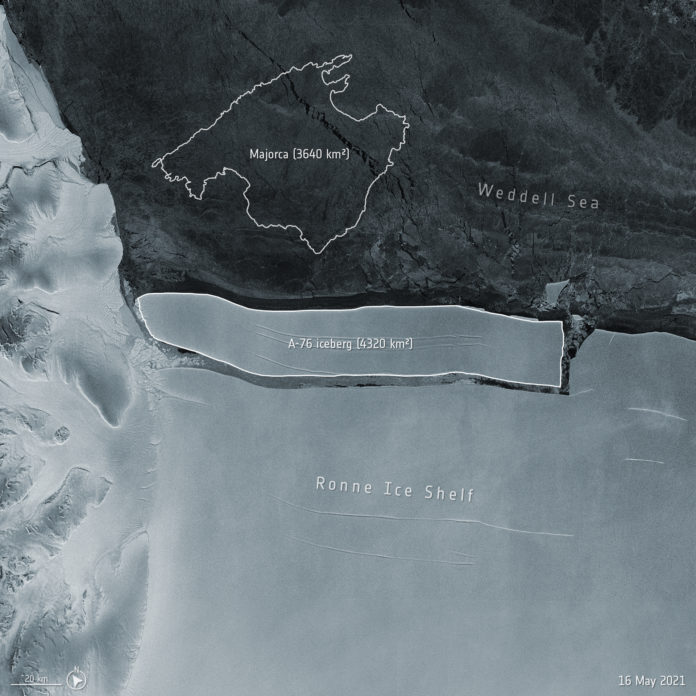New Delhi (NVI): In what could be the effect of global warming, a mammoth piece of ice, bigger than the state of Goa in India, has sliced off the Antarctica, becoming the world’s largest iceberg.
Dubbed as A-76, the iceberg measuring around 4,320 sq km broke off the western side of the Ronne Ice Shelf in Antarctica’s Weddell Sea, according to the European Space Agency (ESA).
The iceberg, which is elongated oval in shape, is bigger in size than Goa, the smallest state of India with the total area of 3,702 sq km.
The piece of ice, captured by the Copernicus Sentinel-1 mission, is around 170 km in length and 25 km wide.
The size of the iceberg makes it the largest in the world, dislodging from the first place the A-23A iceberg (approximately 3880 sq km in size) which is also located in the Weddell Sea.
An iceberg, A-74, which broke off the Brunt Ice Shelf in February this year, was only 1270 sq km, according to the scientists.
The iceberg was spotted by the British Antarctic Survey and confirmed from the US National Ice Center using Copernicus Sentinel-1 imagery.
The Sentinel-1 mission consists of two polar-orbiting satellites that rely on C-band synthetic aperture radar imaging, returning data regardless of whether it is day or night, allowing us year-round viewing of remote regions like Antarctica.
Icebergs are traditionally named from the Antarctic quadrant in which they were originally sighted, then a sequential number, then, if the iceberg breaks, a sequential letter.








